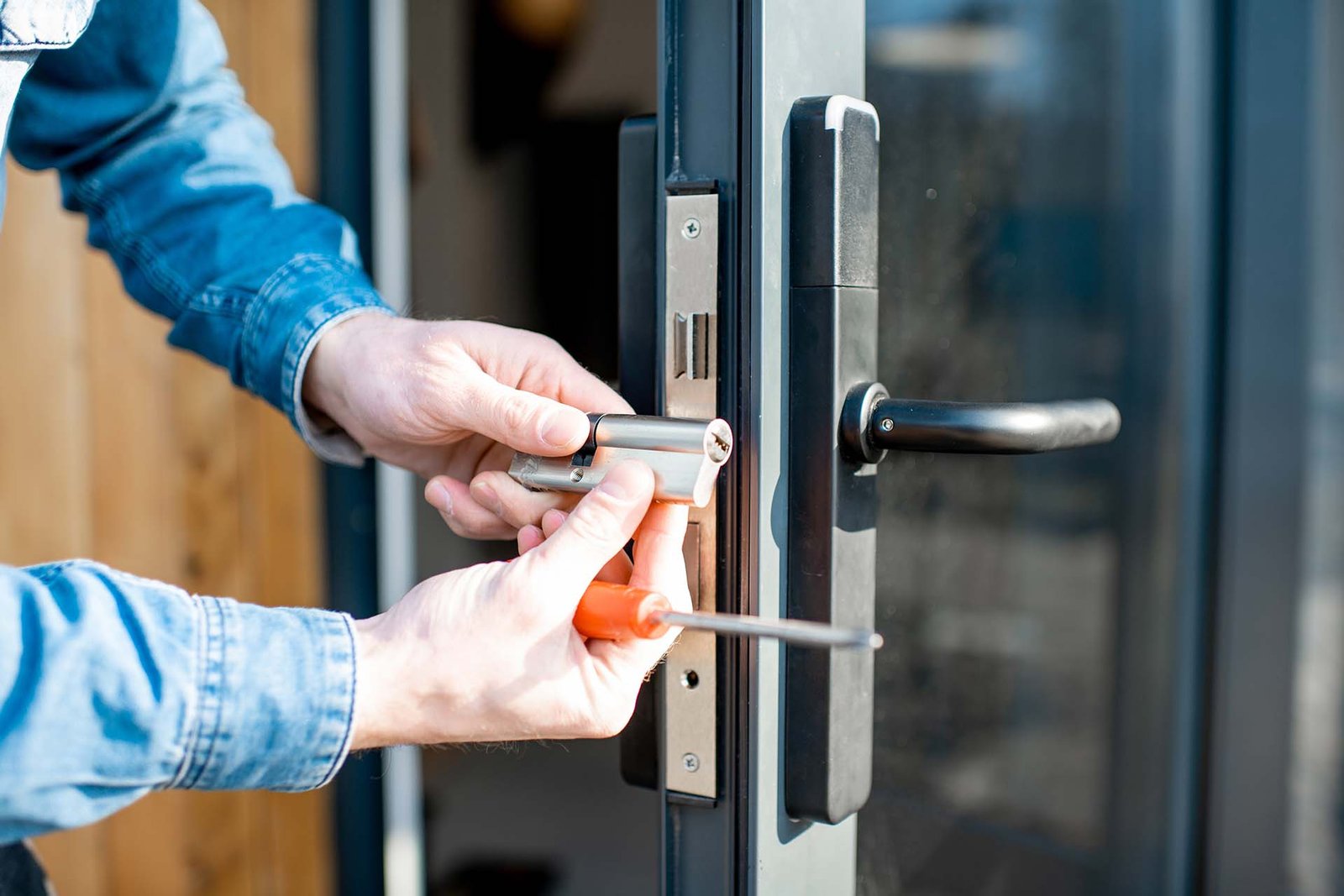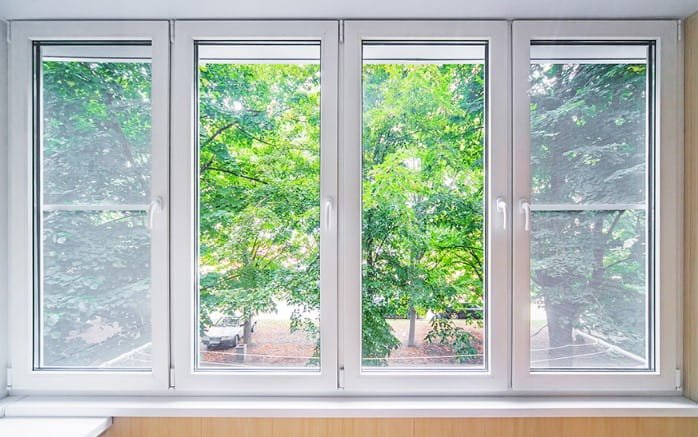
The kitchen is known to be the heart and soul of a household. It is where a number of us pour our hearts out into dishes that make, not only us, but our loved ones happy, satisfied, and craving for more. That being so, keeping it neat and tidy is essential, and should be done regularly, and as a priority – never neglected.
Cleaning the kitchen takes a lot of time and effort to do. With our busy schedules, errands, and other things to prioritize, who has the time to clean a greasy, messy, (sometimes) odorous kitchen? But we have no choice – we have to do it. Hence, we developed with this practical, step-by-step guide in keeping your kitchen (and we mean, the whole kitchen) spic and span – not just for your sake, but for your loved ones too!
It is important that we tell you beforehand that for these cleaning steps, the most crucial items you will need are liquid detergent/dishwashing liquid and a sponge/dish cloth as these items will be used most often in disinfecting your kitchen paraphernalia.
Although pretty basic, change into something you are comfortable getting dirt, grime, and/or dust on, as well as something you can stretch your body with. Keep in mind that there is also a possibility that you could get water, soap, and grease on yourself, so you should not be dressed for the rest of your day as you clean your kitchen.
START ON TOP
The top of your kitchen cabinets and cupboards are where dust bunnies might be present. Cleaning them won’t take you more than ten minutes.
What you will basically need:
- A broom or feather duster
- A rag or sponge
- Towel
- Liquid detergent
- Using a broom or a feather duster, sweep off the dust that might be on your cabinets and/or cupboards. This will result in the dust falling from this furniture to the floor, which is all right.
- Using a damp rag or sponge, wipe off the top of this furniture with water until every corner and side is covered. Using the same rag or sponge, dip it into a soapy mixture (liquid detergent mixed with warm water). Similarly, wipe the top of the kitchen cabinets and/or cupboards. This will disinfect your furniture. Let it sit for about two (2) minutes. Allowing it to slightly dry. Finally, wipe off with a very dry rag or towel.
- You may opt to do the same for the sides of your kitchen cabinet and cupboards, as they often get greasy.
CLEAN COUNTERTOPS
Cleaning your countertops can be very tricky as they are made from different materials (e.g. acrylic, granite, laminate, etc.) Every surface is different from the other, hence, different care is needed of them.
Granite
What you will basically need:
- Dishcloth or rag
- Sponge
- Rubbing alcohol (optional)
- Liquid Detergent
Using a dishcloth, a rag, or a sponge, wipe the surface with warm, soapy water. Let it sit for about a minute or two, then go for the rinse. You may opt to use rubbing alcohol on a granite countertop to disinfect it thoroughly while it leaves a streak and cloud-free finish. It is important to remember that anything of acid and vinegar to use in cleaning will most probably damage a granite countertop, so do not even think about it. Also, avoid using abrasive cleaning materials as they may cause a scratched surface, and you do not want that.
Laminate, Stone, and Butcher-Block (a.k.a. Wood)
What you will basically need:
- Dishcloth
- Sponge
- Liquid Detergent
- Bleach
- An old toothbrush
- White vinegar (optional)
Utilize the following when cleaning a laminate, stone (limestone, slate, etc.), or wooden countertop: warm water, liquid detergent, mild bleach solution, and/or a nonabrasive kitchen cleaner. Wipe the kitchen counter with a soft, delicate material such as a sponge or a dishcloth. Again, avoid abrasive cleaning materials. You may opt to use a toothbrush to clean along with the junctions and edges for a more targeted cleaning.
If your counter happens to be greasy, you may use a mixture of white vinegar and water to wipe it off.
Ceramic Tiles, Concrete, Marble, and Glass
What you will basically need:
- Dishcloth
- Sponge
- White Vinegar
- Liquid Detergent
- An old toothbrush
Ceramic-tiled, concrete, marble, and glass countertops are the easiest to clean. Use a mixture of warm water, liquid detergent, and white vinegar with a dishcloth or a sponge, to wipe the countertop. Avoid using abrasive cleaning materials. Use the old toothbrush to clean between tiles.
THE SINK
You would think that with all the soap and water that flow through the sink, it would be enough for it to be considered clean. You are wrong. Dirt will build up on and in it if it stays unsupervised. Almost everything that happens in the kitchen (cooking, washing, etc.) involves the use of the sink, which would explain its speedy accumulation of gunk and stains, so keeping it clean is essential. We are to give you a good recipe to keep that sink squeaky clean, and what is good about it, is that it is very easy.
What you will basically need:
It depends on what kind of sink. See below.
- In a container of your choice, mix together a quarter cup of baking soda and warm water.
- Dip a sponge in the mixture and scrub the sink gently.
- Rinse with vinegar.
- If you are not satisfied with it, you may use a kitchen cleaner.
- If your sink is made of white porcelain enamel, the trick is to use paper towels. Make sure that the sink is dry to begin with. Line up paper towels in the sink and pour over some bleach on them. Allow the paper towels to sit for thirty to forty minutes, then it would be safe to throw them. Finally, you may start rinsing the sink with running water. It is important to remember that this would only work perfectly on WHITE porcelain, not on color. If you own a colored porcelain sink, the use of baking soda, mild liquid detergent, and/or vinegar would be most beneficial for you.
- Stained sinks? Lemon juice is the key. Utilize half a cup of sodium carbonate and the juice of half a lemon to make a paste. Dap a sponge in the mixture, rub it on the stain, then rinse. It works like a charm on most, if not all sinks.
- Keep it clog-free. Sinks could accumulate a lot of gunk because of all the stuff we put in there. Admittedly, clogged sinks are a pain in the long run. A tip to keep it clog-free would be to use a mixture of a cup of baking soda, plus half a cup of salt plus a fourth a cup of cream of tartar. Store it in a sealed container. The trick is to keep pouring half of the mixture down the drain every three weeks. The mixture should be followed by 1/8 cup of boiling water. This should help in unclogging that sink!
REFRIGERATOR CARE
Most, if not all kitchens, value their refrigerators most as it preserves all the food you are to cook or consume. It is safe to keep for all consumable goods which gives you more reason to clean it. Now, it may take more effort than usual but if you think about it, it’s more than worth it.
What you will basically need:
- Dishwashing liquid
- Dishcloth
- Rag
- Sponge
- Baking Soda (optional)
- Microfiber cloth or soft towel
- Charcoal, coffee beans, cotton balls, and vanilla extract (optional)
- Beforehand, mix together warm water and dishwashing soap in a large container (basin, preferably) until it forms suds. You will need that for later.
- Continue with the obvious. Clear out your refrigerator of food. Remove everything. In doing this, it will allow you to clean all the corners and crevices – not contaminating anything.
- After removing the food and storing them in a safe and clean place, remove all the drawers and shelves. Soak them in the soapy mixture prepared beforehand.
- While these are soaked, take a dishcloth, a rag, or a sponge. Dip your cleaning material into the same soapy mixture, and wipe the interior of the refrigerator. This will take away any stains and minor odors that lurk in your refrigerator. After three to five minutes, you may wipe the interior with a dry dishcloth.
- For stubborn stains, making a paste mixture of baking soda and water is the way to go. Remember that this is a paste, thus, a small amount of water would suffice.
- Apply the paste on the stubborn stain. Leave it on for an hour. The baking soda will loosen the stain making it easy to remove or wipe off. Remove the baking soda with a microfiber cloth or a high-quality sponge.
- After cleaning the interior, take the soaked shelves and drawers and rinse them with water. After this, dry them with a microfiber cloth or a soft cloth towel.
- Reinstall your drawers and shelves and start putting back the food.
- Place a mound of charcoal or coffee beans or baking soda in a bowl and put inside the refrigerator. This will neutralize and absorb any odors and stenches. You may also try using a cotton ball soaked in vanilla extract if you do not feel comfortable with the first suggestions.
It is important to keep in mind not to use any form of disinfectant (e.g. bleach) in cleaning the inside of the refrigerator. Bleach contains strong chemicals and contaminants that may affect the food you store inside your refrigerator.
STOVE TOPS
Removing the splatters and spills on your stove-top can be very easy. It won’t require a lot of materials to be used – just dish-washing liquid, warm water, and some cleaning materials (e.g. sponge, towel, scrub brush).
What you will basically need:
- Grease-Removing Dishwashing liquid such as Dawn
- Towel or dishcloth
- Sponge
- Prepare a mixture of soapy water by mixing dish washing liquid with warm water.
- Remove the knobs and grates from your stove-top. Soak them in the soapy water.
- Wipe the stove-top with a damp towel or dishcloth. Scrape off some residue you may see on there and immediately discard them.
- Grab hold of the dish washing liquid and a sponge. Put a small amount of dish washing soap on the sponge. Add a little amount of water on there, too.
- Wipe the stove-top repeatedly until you remove all the food splatters and spills. You may want to also repeatedly rewet and reapply dish washing liquid on your sponge every once in a while.
- Leave the soap on the stove-top for three to five minutes. The soap will loosen all the dirt.
- Rinse your sponge until water runs clear. After doing so, use the same sponge to wipe off the residue on the stove top. Keep squeezing and rewetting your sponge until you are left with a clean, damp surface.
- Using a dry dishcloth or a kitchen towel, wipe the stove top until dry. Make sure that it is clean of water streaks.
- Time for the knobs and grates! Using the scrub brush (or a tooth brush), scrub the grease off the grates and knobs. Rinse and let it dry completely.
- Wipe everything out just to ensure that it is all grease-free.
- Re-install the knobs and the grates, and you are all done.
- Consider going the air fryer route as it replaces multiple kitchen appliances
CLUTTER-FREE BINS
The trash bins are where the action is at. It is the dirtiest item in your kitchen as it is the collector of all your kitchen garbage – from fruit peels to empty cans to plastic wrappers… you name it. Emptying the trash bin should be done frequently. But there is more to it than just that because some food residues could possibly get stuck in the inner liners of the trash bin. Nonetheless, this is one of those times that we will get our hands dirty. No worries, though – rubber gloves may be used during the cleaning of your trash bins as it might get nasty.
What you will basically need:
- Liquid detergent
- Hose
- Disinfectant
- Toilet brush
- Sponge
- Towel
- Clean garbage bag
- Start by emptying your trash bin and removing food particles that might have gotten stuck in the liners – meaning all the gunk you can see with your eyes.
- Once emptied, it is now time to wash the bin. Head on outside or wherever you might have access to a hose, and just hose it down. The goal is to get the bin soaking wet – interior and exterior.
- Mix together liquid detergent and warm water in a basin or any container of your choice. Grab hold of a sponge and dip it in the soapy mixture. Make sure it is soaking wet. Squeeze out the excess inside the bin and start wiping from the inside and work your way to the outside. Once satisfied, you may rinse it out and pat the bin dry with a paper towel.
- Utilize a disinfectant and spray the bin all over with it. Be generous in spraying. Make sure you get to all the nooks and crannies.
- Grab hold of a toilet brush and scrub the bin again – thoroughly, this time. After which, leave the disinfectant sitting there for about five to eight minutes.
- Rinse and dry (air dry or towel dry)
- Replace the garbage bag that goes inside the trash bin and you are good to go.
WALLS, FLOOR, CEILING
These are where splattered food residue and grease automatically attract dust and dirt. It is important that these get cleaned as they are the visible parts of the kitchen.
What you will basically need:
- Broom or feather duster
- Liquid detergent
- Sponge
- Towel
- Cream Degreaser
- Baking soda (optional)
- Vinegar
- Start with dusting these areas to initially clear them out. You may use a broom or a feather duster to do so – from top to bottom, side to side – getting into the areas where spider webs, and dust bunnies tend to accumulate.
- Add ¼ liquid cleaning detergent in a bucket of warm water. Utilizing a sponge, dip it in the soapy mixture then wipe your walls from bottom to top (repeatedly), in sections, and in a circular motion. Rinse with a sponge that was soaked in just warm water. Let it dry.
- If you happen to see a food stain, add water to it and let it sit for about 5-7 minutes before you wipe it off with a towel or a sponge. In the event that it would not come off, scrubbing the stubborn stain is necessary but not so much as to scrape your wallpaper, paint, or tiles.
- Use a cream degreaser to take away the grease off your walls. In the absence of a cream degreaser, the use of baking soda and warm water is most practical (and effective).
- Vinegar and warm water makes an efficient floor cleaner. Simply mix the two ingredients and use a standard mop, sponge, or rag. The floor will dry quickly if you use very warm water.
Once you have accomplished all these step-by-step cleaning guides, we can assure you that your kitchen will be one of the cleanest ones in the land. You do not have to spend all day cleaning the kitchen! A thorough cleaning followed by a regular rotation of cleaning various areas will keep your kitchen remarkably clean. After all, who would not go out of their way to keep a clean kitchen, not only for themselves but for their love ones as well! Happy cleaning!
Don’t want to stop there? Here are a few more tips to help keep that kitchen sanitized:
- Clear out your countertops. Utilize those cabinets and cupboards! Your coffee makers, toasters, waffle makers, and all those little appliances that are not used daily do not have to live on your countertops. Store them in a safe place – behind closed doors. This way, you have more space to yourself and for others who want to share the kitchen with you.
- Eliminate unused items. Now that you have a clean kitchen, it is time to spot out items you do not need anymore. Do you really think you still need those empty disposable containers you keep accumulating at fast-food restaurants, or maybe those rusty salt and pepper shakers? If you have no use for them or if you have not used them since 2003, then it is time to say good-bye to them and maybe replace those rusty items with new ones!
- When was the last time you saw your refrigerator? Do you keep using your refrigerator as a photo album and/or a bulletin board for all the bills you need to pay or maybe a reminder to a wedding you need to attend to two months from now? Although it works as an effective bulletin board, it does affect the overall appearance of your kitchen. You may want to consider limiting the there clutter on your refrigerator. Alternative? Opt for an actual bulletin board! Invest in it and place it somewhere in your kitchen (just nowhere near the stove). It will help you be organized and it will help brighten up your kitchen space.
- Consider drawers. Take out menus or flyers tend to get collected with the idea that you might need it someday. If you have such a collection, you may want to invest in a small kitchen drawer – a three-layered one would suffice. Label them accordingly, to your liking, and you will be the queen of organized items in no time! Additionally, if you feel like it does not belong in the kitchen, then it is best to keep it out of the kitchen.








